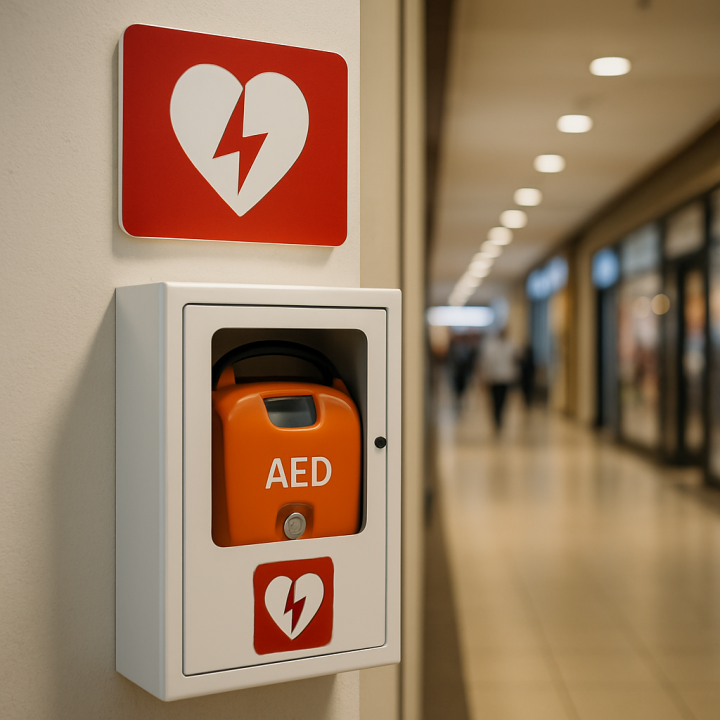When someone collapses from sudden cardiac arrest, an Automated External Defibrillator (AED) can mean the difference between life and death. These portable, life-saving devices deliver an electric shock that can restart a heart—and they’re designed to be used by anyone, no medical training required.
But here’s the problem: in many public places, AEDs are still missing, hidden, or locked away.
It’s time for that to change. Here’s why AEDs should be everywhere—and how you can help make that happen.
AEDs Save Lives Within Minutes
For every minute without defibrillation, a cardiac arrest victim’s chance of survival drops by about 10%. EMS response times in most areas range from 6 to 10 minutes or longer. That’s often too late.
When a bystander uses an AED within the first 3–5 minutes, survival rates can jump to 70% or higher.
They’re Safe and Easy to Use
Modern AEDs are designed for laypeople. They:
- Use clear, step-by-step voice instructions
- Analyze the heart rhythm automatically
- Deliver a shock only if it’s needed
You can’t accidentally hurt someone with an AED—it won’t deliver a shock unless it’s appropriate.
Where AEDs Should Be Located
AEDs should be as common as fire extinguishers in:
- Schools and gyms
- Airports and malls
- Community centers
- Sports arenas and stadiums
- Offices and apartment complexes
- Police cars and public transportation
And they must be easy to find—clearly labeled, visible, and accessible without keys or codes.
How to Advocate for AED Access
You don’t have to be a healthcare worker or policymaker to make a difference. Here’s how you can help:
1. Talk to Local Leaders
Ask school boards, business owners, and community centers if they have AEDs and regular CPR training. If not, encourage them to act.
2. Start a Petition
Use platforms like Change.org to gather support for local AED initiatives in your town or workplace.
3. Share Stories
Survival stories involving AEDs are powerful. Share them on social media or at local events to raise awareness.
4. Support Legislation
Look for state or local bills that promote AED access and training. Call or email your representatives in support.
5. Fundraise
AEDs cost around $1,200–$2,000. Organize a fundraiser to place one in your school, church, or neighborhood.
Final Thoughts
AEDs are simple, powerful, and proven to save lives—but they’re only effective if they’re available. By advocating for more accessible AEDs, you’re not just promoting safety—you could be saving a future life.
Because when cardiac arrest strikes, seconds count—and AEDs save seconds.


